Items filtered by date: July 2022
Proper Tools for Cutting Toenails
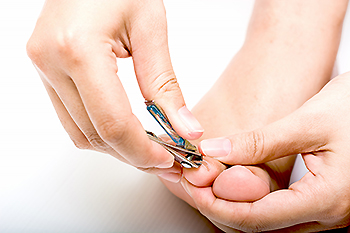
Cutting one’s toenails is a key component of maintaining healthy feet. Not only does keeping your toenails cut to an appropriate length help stave off the development of ingrown toenails, it is also a way to make your feet look more visually appealing. However, many individuals who attempt to cut their toenails fail to utilize the appropriate tools for this critical self-care practice. For example, many individuals attempt to cut their toenails by using a pair of regular scissors or even a cutting knife. These tools are not appropriate and can be very dangerous. Instead, you may opt for a proper pair of toenail clippers. It is important that you utilize a different, larger pair of nail clippers used exclusively for your toenails. This is because using the same pair of nail clippers on both your fingernails and your toenails can spread bacteria and be unhealthy. In addition to having two pairs of different nail clippers, you should also be mindful of keeping them clean. You can clean and disinfect your pair of toenail clippers after each use to make sure that you are doing your best to prevent the spread of harmful bacteria. Lastly, another proper tool for cutting your toenails is a nail file, such as an emery board. You can use this tool to smooth the edges of your nails after clipping them. For more information on the proper tools you should be using to cut your toenails, consult a podiatrist.
Everyday foot care is very important to prevent infection and other foot ailments. If you need your feet checked, contact Shaun J. Limon, DPM and Lisa Griffith-Limon, DPM from Limons Foot & Ankle Care. Our doctors can provide the care you need to keep you pain-free and on your feet.
Everyday Foot Care
Often, people take care of their bodies, face and hair more so than they do for their feet. But the feet are a very important aspect of our bodies, and one that we should pay more attention to. Without our feet, we would not be able to perform most daily tasks.
It is best to check your feet regularly to make sure there are no new bruises or cuts that you may not have noticed before. For dry feet, moisturizer can easily be a remedy and can be applied as often as necessary to the affected areas. Wearing shoes that fit well can also help you maintain good foot health, as well as making it easier to walk and do daily activities without the stress or pain of ill-fitting shoes, high heels, or even flip flops. Wearing clean socks with closed shoes is important to ensure that sweat and bacteria do not accumulate within the shoe. Clean socks help to prevent Athlete’s foot, fungi problems, bad odors, and can absorb sweat.
If you have any questions please feel free to contact our offices located in Bradenton and Lakewood Ranch, FL . We offer the newest diagnostic and treatment technologies for all your foot and ankle needs.
How Long Does a Broken Toe Take To Heal?
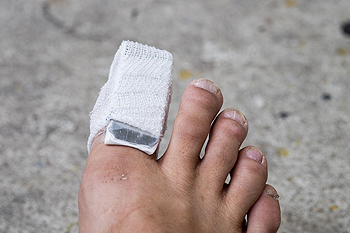
Breaking any bone in the body can be a serious threat to your overall health and well-being. Broken toes are no exception. Since the bones in the toes are smaller, they can be particularly vulnerable to being injured and broken. When broken, toe bones will often bleed and swell. It is common also to identify blood beneath the toenail. Breaking bones in the toes is usually extremely painful and can make walking especially difficult. Many patients will wonder how long it takes for a broken toe to heal. Although it varies depending on the patient, the injury, and the particular toe bone, there are several rules of thumb to follow. Broken big toes generally take longer to heal. After wearing a walking boot and then eventually a shoe with a stiff sole, patients can recover from broken big toes in approximately 6 to 8 weeks. Broken toes other than the big toe, commonly the pinky toe, take less time to heal. For example, after strapping and wearing shoes with stiff soles, a patient can recover from a broken pinky toe in 4 to 6 weeks. No patient wants to suffer a broken toe injury for longer than is necessary or to prolong the pain. However, it is important to let the bone take time to properly heal. Always talk with a podiatrist to ask questions about your broken toe bone and how it can be treated.
A broken toe can be very painful and lead to complications if not properly fixed. If you have any concerns about your feet, contact Shaun J. Limon, DPM and Lisa Griffith-Limon, DPM from Limons Foot & Ankle Care. Our doctors will treat your foot and ankle needs.
What to Know About a Broken Toe
Although most people try to avoid foot trauma such as banging, stubbing, or dropping heavy objects on their feet, the unfortunate fact is that it is a common occurrence. Given the fact that toes are positioned in front of the feet, they typically sustain the brunt of such trauma. When trauma occurs to a toe, the result can be a painful break (fracture).
Symptoms of a Broken Toe
- Throbbing pain
- Swelling
- Bruising on the skin and toenail
- The inability to move the toe
- Toe appears crooked or disfigured
- Tingling or numbness in the toe
Generally, it is best to stay off of the injured toe with the affected foot elevated.
Severe toe fractures may be treated with a splint, cast, and in some cases, minor surgery. Due to its position and the pressure it endures with daily activity, future complications can occur if the big toe is not properly treated.
If you have any questions please feel free to contact our offices located in Bradenton and Lakewood Ranch, FL . We offer the newest diagnostic and treatment technologies for all your foot and ankle needs.
House Slippers, Socks, or Crocs: How to Choose the Safest Footwear
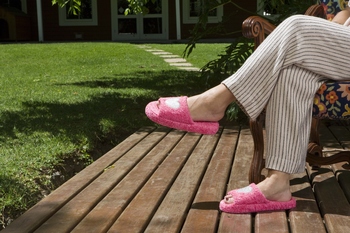
You want your loved one to be comfy around the house, but what's on his or her feet has a huge impact on safety. Accidental falls are a major cause of broken bones and, in turn, out-of-home placement for older adults.
Look for nonskid soles.
Socks provide warmth and can be a good around-the-house choice, especially at nap time. Whether you choose slippers or socks for hanging around the house, look for nonskid materials. These are now readily available in socks as well as slippers and shoes. Nonskid surfaces provide traction against smooth wood and tile, reducing the chance of falls.
Don't let rubber meet the road.
Shoes with smooth rubber on the bottom, or shoes made of rubber (such as Crocs-style molded sandals) tend to catch on smooth floor surfaces, inviting accidental trips. A little tread, in contrast, provides a grip against the floor.
Avoid heavy treads.
Take care not to buy shoes with thick, overly heavy treads. Many running-shoe and walking-shoe styles seem like they'd be solid anchors on unsteady feet. However, when they have large, deep ridges in the soles, these can catch on carpeting and cause the walker to lose balance.
Avoid asking a woman to sacrifice her sense of style.
It can be hard for a "shoe person" to give up stylish footwear in favor of safer choices. First, try looking for brands (such as Merrell or Clarks) that emphasize movement without sacrificing style. Look for colors or detailing that can give the wearer that kick of pleasure. If such shoes prove hard to find, encourage a shoe gal to express herself with other accessories: Inspire or indulge a fancy for scarves, hats, or pocketbooks -- a different creative outlet that can take the sting out of giving up kitten heels and delicate T-straps.
Go for a good fit.
Shoes or slippers that fasten with Velcro are easy to put on and off, and they stay securely on the foot. Scuffs and slip-on styles, in contrast, are too easy to slip out of. Ideally, the shoe should be wide enough in the toe box to be comfortable and accommodate any bunions or bumps.
Don't go by your loved one's customary "old" size. Swelling and other conditions can make feet a size or more larger. Shoes that are too small pinch the foot and can impair gait. Try going up a size or two.
Take extra precautions once shuffling starts.
Many older adults shuffle their feet, either because of degenerative issues or as a complication of dementia. Comfortable footwear with safe treads becomes especially important.
Toenail Fungus Is Contagious, and May Be Prevented
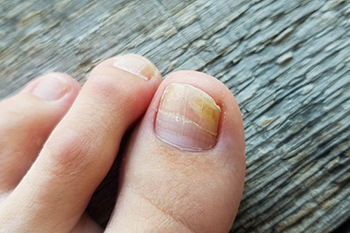
Toenail fungus can be an unpleasant and unsightly foot condition, despite the fact it is generally not serious. The majority of people may experience this type of fungus at some point in their lives, and it can be difficult to treat. It occurs as a result of the fungus entering the body through tiny cracks in the skin on the feet. This type of fungus is known to be contagious, and it lives and thrives in warm and moist environments, including shower room floors and locker rooms. It is advised to wear appropriate shoes while in these types of areas, as this can help to stop the spread of toenail fungus. The noticeable symptoms consist of a thickening and yellowing of the toenails, often starting with the big toe. This infection can cause the toenails to become brittle, and they may be difficult to trim correctly. In severe cases, the surrounding skin can become red and irritated, and may begin to itch. Many patients have found effective preventive methods for this type of fungus. These consist of wearing shoes that are made of natural materials, and refraining from sharing towels, shoes, and socks. Additionally, shoes that have been contaminated with this fungus need to be replaced, and keeping the toenails trimmed may aid in helping to prevent toenail fungus. If you are afflicted with this infection, it is suggested that you confer with a podiatrist at the beginning stages who can offer you correct treatment techniques.
For more information about treatment, contact Shaun J. Limon, DPM and Lisa Griffith-Limon, DPM of Limons Foot & Ankle Care. Our doctors can provide the care you need to keep you pain-free and on your feet.
Toenail Fungus Treatment
Toenail fungus is a condition that affects many people and can be especially hard to get rid of. Fortunately, there are several methods to go about treating and avoiding it.
Antifungals & Deterrence
Oral antifungal medicine has been shown to be effective in many cases. It is important to consult with a podiatrist to determine the proper regiment for you, or potentially explore other options.
Applying foot powder on the feet and shoes helps keep the feet free of moisture and sweat.
Sandals or open toed shoes – Wearing these will allow air movement and help keep feet dry. They also expose your feet to light, which fungus cannot tolerate. Socks with moisture wicking material also help as well.
If you have any questions please feel free to contact our offices located in Bradenton and Lakewood Ranch, FL . We offer the newest diagnostic tools and technology to treat your foot and ankle needs.
Caring For Corns on the Feet
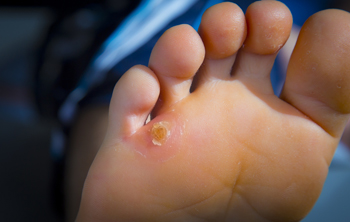
When frequent rubbing occurs on your feet or toes, corns may develop in response to the friction. Such friction is usually caused by tight or ill-fitting shoes that rub against the feet. The corns are similar to calluses and usually create hardened patches of skin at the sight of the friction. In some cases, corns on the feet and toes may bleed and even cause discomfort. Fortunately, many instances of corns on the feet can be solved with a quick fix—simply not wearing the shoes that cause the friction to occur and opting for better-fitting footwear. Some individuals might even wear a protective pad around the corn while it is healing to ensure that it will not rub against anything and exacerbate the toughness of the skin. While these at-home remedies have proven effective, some individuals with corns may need further medical attention. For example, further complications could arise for those with diabetes or who experience numbness in the feet. Continuing to experience pain and inflammation at the sight of the corn may also be a sign to reach out to a medical professional. While corns do not usually pose a significant health threat, knowing the causes of this condition and being able to care for it can help you lead a healthier life for your feet.
Corns can make walking very painful and should be treated immediately. If you have questions regarding your feet and ankles, contact Shaun J. Limon, DPM and Lisa Griffith-Limon, DPM of Limons Foot & Ankle Care. Our doctors will treat your foot and ankle needs.
Corns: What Are They? And How Do You Get Rid of Them?
Corns are thickened areas on the skin that can become painful. They are caused by excessive pressure and friction on the skin. Corns press into the deeper layers of the skin and are usually round in shape.
Ways to Prevent Corns
There are many ways to get rid of painful corns such as:
- Wearing properly fitting shoes that have been measured by a professional
- Wearing shoes that are not sharply pointed or have high heels
- Wearing only shoes that offer support
Treating Corns
Although most corns slowly disappear when the friction or pressure stops, this isn’t always the case. Consult with your podiatrist to determine the best treatment option for your case of corns.
If you have any questions please feel free to contact our offices located in Bradenton and Lakewood Ranch, FL . We offer the newest diagnostic and treatment technologies for all your foot and ankle needs.


